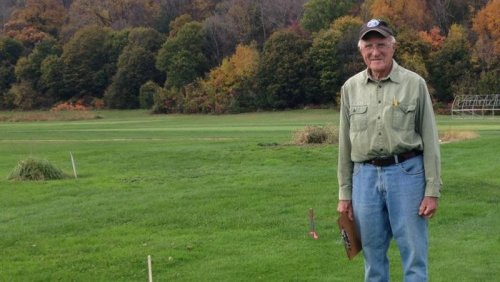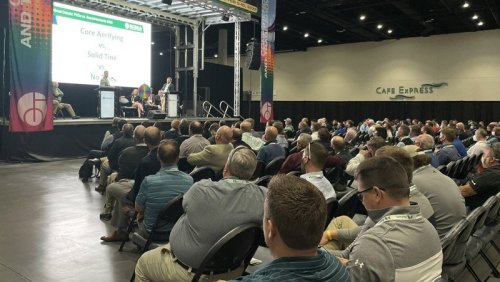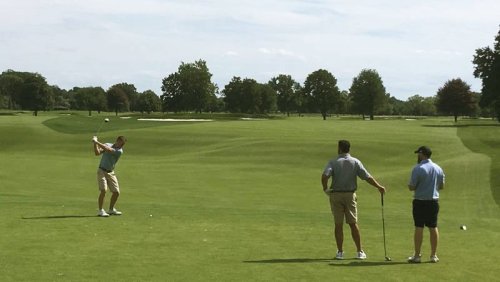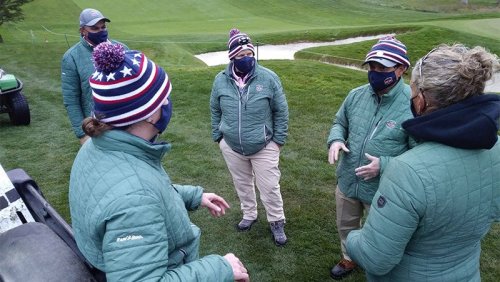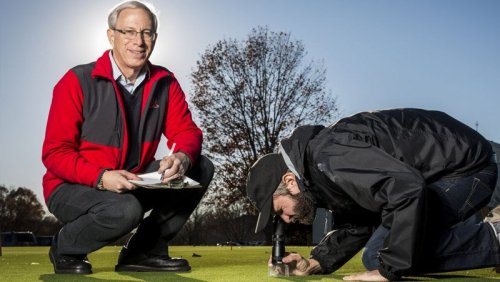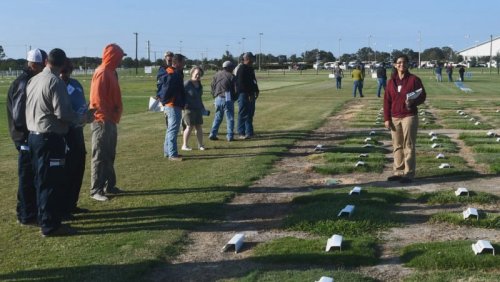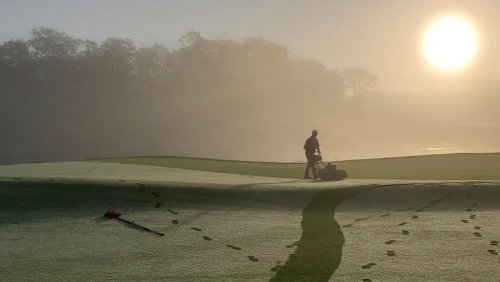
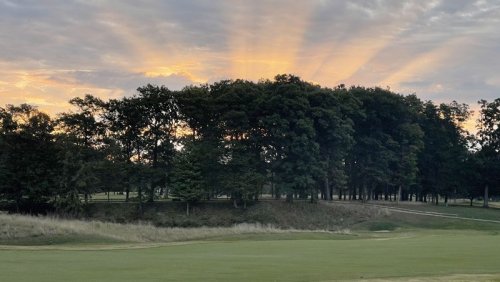
Although plain old hard work always is the foundation on which a solid career is built, it is not always enough. Success also requires an arsenal of soft skills when dealing with golfers and committees, a trusted network of colleagues and mentors as well as a little bit of luck.
After 40 years as a head superintendent, including the last 22 at Westwood Country Club in Rocky River, Ohio, Dave Webner (right) knows a little bit about what it takes to succeed as a greenkeeper. He also knows about paying his good fortune forward for the benefit of others, including his two current assistants, Scott Pike and Eric Nordmeyer.
"It is important to have guys you can call, sometimes just to joke with and help make you feel better, sometimes just to blow off steam and sometimes to ask for help," Webner said. "You have people you work with or for, and you take things that are positive, and there are some things you don't use and you develop what works for you."
When Webner's own career began more than four decades ago, he learned the ropes from two other superintendents with long careers. After attending Penn State's two-year turf program run then by Joe Duich, Ph.D. he worked as an assistant at Canterbury Golf Club in Beachwood, Ohio, under both Bill Burdick and Terry Bonar. His time at Penn State and later Canterbury helped launch a career that has spanned more than four decades.
"Duich would pitch a piece of chalk to different guys in the class and say 'draw a grass plant,' " Webner said. "Some of the drawings were elaborate, some were a stick figure of a grass plant, but none of them were right. Then he'd say 'You want to grow grass, but you can't even draw what a grass plant looks like.' You had to start from scratch."
Webner's early years and subsequently his introduction to golf are a slice of Americana. The son of a man so true he was nicknamed "Honest" Rod, Webner grew up in Orrville, Ohio, the home of two iconic brands that prove sweet and sour can mutually coexist - Smucker's jelly and former Indiana University basketball coach Bobby Knight.
During the 1975-76 college basketball season, Knight's Indiana Hoosiers were on their way to finishing the season undefeated and eventually went on to win the national championship. That group is still the last Division I team to finish the season without a loss. In 1976 back in Orrville, Webner learned of an opportunity that proved to be just as historic and life-changing - for him, anyway.
While running a neighborhood grocery store in his hometown, Webner took a part-time job as the night waterman at another Orrville institution, Riceland Golf Course, a 100-year-old mom-and-pop daily fee that remains a deal even today with walking rates of $18 and $30 with a cart.
It was at Riceland, which lacks the resources of eastern Ohio layouts like Sharon or Firestone, where Webner got his first taste of what really is involved in keeping turf alive through challenging conditions.
Fast forward to his last days at Penn State in 1981, and Webner had his choice of jobs, including offers from Frank Dobie at Sharon Golf Club and Burdick at Canterbury. He chose the latter and soon was working under Bonar when Burdick was promoted to oversee not only Canterbury, but also nearby Shaker Heights.
That no-nonsense approach embraced by Duich, Burdick and Bonar helped forge the skills Webner would need in the real world.
"Dave had a lot of positive qualities," Bonar said. "He was easy to talk to, and very open-minded about learning new things and different ways of doing things."
During his 40 years as a superintendent, that include a short stint at Delaware Country Club in Muncie Indiana, and 13 years at Lake Forest Country Club in Hudson, Ohio, Webner has, like any superintendent, navigated good times and bad. He's asked colleagues for help and been there for them, too.
"David is one smart guy and a great superintendent," said Kevin Ross, a former superintendent and turfgrass consultant who was Webner's classmate at Penn State. "Always love having conversations with him, because they are at a different level."
The beneficiary of the experience of mentors and colleagues, Webner also is a benefactor, sharing his knowledge with others to help them out of a jam, or to further their own careers.
Westwood Country Club. Photos provided by Scott Pike A graduate of Ohio State's four-year program, Scott Pike already was the assistant at Westwood when Webner was hired in 2000. The two had met previously at OTF events, but Pike recalls being a bit nervous when his employer was hiring his new boss.
"I had started here as the assistant in 1999, and Dave was hired in March or April of 2000," Pike said.
"The club told me they wanted to go in a different direction and were not going to promote me. I had heard stories of how some superintendents like to bring in their own people, so I told them if they hire someone to please tell that person the job comes with an assistant already in place. I wanted to make sure whoever was interviewing knew my story and my background."
It did not take long for both parties to realize each could complement the other.
"We were driving the course one day when he first got here, and I was able to see right away how he does things," Pike said. "He has high standards and an eye for detail.
"He asked my opinions, and I think he wanted to see where I was coming from. He picked my brain, but I think a lot of that was to see what I knew and didn't know. Still, he valued my opinion, and that meant a lot to me."
That relationship has been enough to keep Pike, 50, around as an assistant for more than two decades.
"He cares about the people he works with," Pike said. "He never says I work for him. He always says we work together. It's a we thing, not an I thing, and that is a big part of what has kept me here as long as I've been here."
Although he credits his mother and Honest Rod for much of that outlook, Webner says he learned a great deal about accountability on the job from Burdick and Bonar during his time at Canterbury.
"They always talked about how the only thing you have is your credibility. If you screw up, stand up and admit it," Webner said. "It will haunt you if you try to cover it up."
Bonar taught not just how to be a superintendent, but what it truly means to manage a staff.
"He taught me that you need to know where everyone is on course all the time, that you should be able to drive across the course and tell if someone is out of place," Webner said. "And if someone is out of place you have to know why."
Bonar laughed when he was reminded of that advice.
"I wrote a paper on that. It was a damn good paper," Bonar said.
"You know what section everyone is on, and you know how long it takes to mow greens, or fairways, or rake bunkers. At Canterbury, we had two hours between when we started and when play began, so you knew where everyone was supposed to be in relation to play. If you looked at your watch and saw someone was behind, 'no, no, no, that's not right.' It was just about being efficient."
When things on the golf course went south, which they are prone to do on occasion, those early lessons, especially remaining humble, have proven invaluable.
"You have to always be truthful and own your mistakes," Bonar said. "You have a responsibility, a responsibility to your membership to take care of their golf course. That comes above everything."
- Read more...
- 1,860 views

